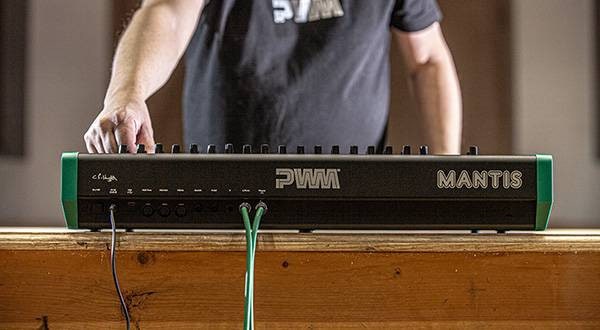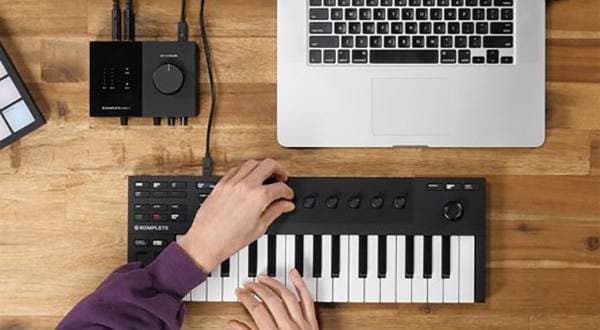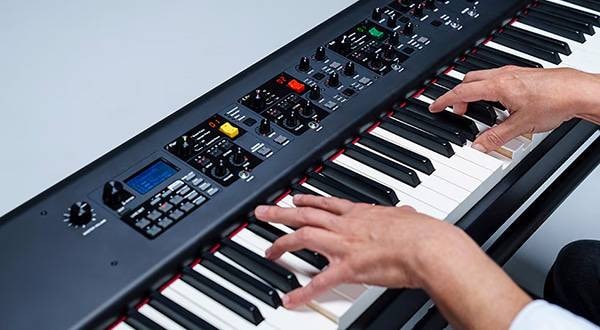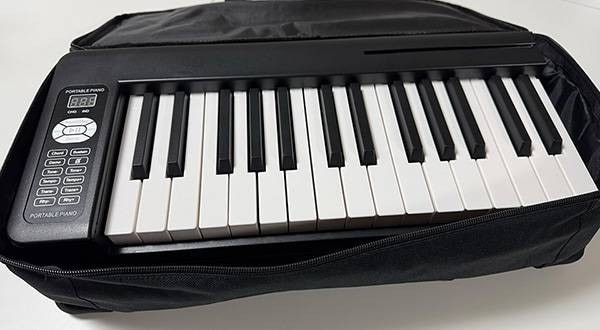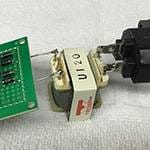A digital piano may be a big decision for those who play the piano as a hobby, resume practicing after a long hiatus, or children who are taking piano lessons and they don't yet have a piano.
Many brands have wide selections of various types of models which can be intimidating for first-time buyers so here are some key points to remember when shopping for a digital piano.
Advantages and Disadvantages of Digital Pianos
First of all, let's consider whether a digital piano really is the option that will be best for you. The advantages and disadvantages of digital pianos are as follows.
Major Advantages of Digital Pianos
● Less expensive/easier to move than acoustic pianos
This is the greatest advantage of digital pianos that acoustic pianos don't have.
● No worries about annoying your neighbors
Most digital piano models allow you to adjust the volume and connect headphones, so you can practice at night even if you live in an apartment!
● Selectable Tone Colors
A wide range of instruments and tone colors stored in a sound bank that can be useful when playing in ensembles and broadening the scope of possibilities for performances.
● Maintenance-Free
Acoustic pianos need to be tuned regularly, and the cost can be quite expensive. Since you don't need to worry about a digital piano going out of tune, you can save a great deal of money even when considering the maintenance costs.
Major Disadvantages of Digital Pianos
● Different from acoustic pianos
Not surprisingly, the touch and the tone of digital pianos cannot compare with the natural tone of acoustic pianos. If you're used to playing an acoustic piano and haven't had a chance to try out a digital piano, you may have difficulty getting used to the touch and the sound of the digital piano. On the other hand, if your first keyboard instrument was a digital piano, you may feel uncomfortable when playing an acoustic piano.
Acoustic pianos→Hammers strike and vibrate the strings to produce sound
Digital pianos→Recorded sound samples of acoustic pianos play out from the speakers
Acoustic pianos and digital pianos are fundamentally different because the keyboard mechanism and the materials that they are made of make them similar but they are not the same animal. The touch does not feel the same from one instrument to another.
As long as you remember that acoustic pianos and digital pianos are inherently different, you will have no issues when buying your own instrument.
With that being said, the higher-end models of digital pianos have become advanced enough to come close to replicating acoustic pianos in terms of both touch and sound.
● Product life
An acoustic piano can last for decades if you maintain it well. A digital piano does not require maintenance, but the sound will deteriorate over time and the keyboard will start to malfunction due to the aging of the parts. Also, when a particular piano model is discontinued, it's difficult to replace the parts. In other words, you can't even try to maintain it. The lifespan of a digital piano is about 10 years after the date of purchase. If your digital piano happens to break after owning it for many years, then you can easily buy an upgraded model.
I hope that you understood some of the characteristics of digital pianos a little better.
Let's move onto some tips to remember when choosing a digital piano.
Tips for Choosing a Digital Piano
The essential things about both digital and acoustic pianos are of course the sound and the keyboard. Choose one without compromising what you want and need in an instrument. First, I'm going to talk more in detail about the keyboard.
■ How to choose a keyboard
The weight of the keys, the key return speed, the key depth, and other aspects can vary widely depending on the brand or model so we recommend trying it out before you buy. Even if you like what a piano model looks like on the spec sheet, you may change your mind when you actually try it out.
For people who are just playing piano as a hobby, I recommend just trying out many pianos and then narrowing down your pick to the one that you liked best.
If you are taking piano lessons, start looking by trying some acoustic pianos, but if you are considering a digital piano, I think that going with one that has a similar touch to your piano teacher's piano will be more helpful for you. Avoid going for keys with a light touch just because they're easier to play. Keys that are too light will not help you to gain finger strength.
If, for whatever reason, you can't go to a store and try out some digital pianos, you can guess to some extent what you're looking for by reading the spec sheet.
And now, I'm going to show you the parts you need to check to eliminate any mismatches within the specs.
■ Materials for keys
● Wooden keys
Many models over 200,000 yen are built with wooden keyboards like acoustic pianos. The touch of the keys tend to be on the heavier side so they feel almost like acoustic pianos. If you take piano lessons, I recommend choosing a wooden keyboard. ROLAND makes models using a hybrid keyboard made of wood and plastic to achieve both a nice touch and durability.
● Plastic keys
Most lower priced models have plastic keyboards. The surface of the keyboard is smooth and tends to have a light touch.
● Synthetic ivory/ebony finish
The finest materials used to make piano keys are ivory for the white keys, and ebony for the black keys. Synthetic ivory/ebony is a surface finish that imitates the textures of genuine ivory and ebony. The rough surface makes for less finger slipping and it feels quite different from the plastic finish.
■ Keyboard action
The internal mechanical action when you press a key also differs greatly depending on the model. It affects the touch.
● Keyboards with keys weighted differently in the bass and treble
This feature makes key weight in the treble feel like a grand piano. This feature is often installed in entry models that cost around 30,000 to 40,000 yen, so it is a common feature of digital pianos.
● Key weight adjustment
Key weight adjustment is a feature that allows you to adjust the weight of the keys. It prevents the keys from being lighter or heavier than expected, and this feature is also recommended when multiple people share the same instrument. Quite a few low-priced models can have the keys adjusted to 5 different weights, so make sure to look out for this feature on the spec sheet.
● Seesaw mechanism
Some digital piano keyboards use built-in springs for the action, however, some digital pianos use a mechanism called the 'seesaw' which moves based on the principle of levers and is also the same action as in acoustic pianos. With this feature, it is possible to obtain a touch that is almost like an acoustic piano. When the keys are pressed down towards the front of the keys, the lighter the response, and when the keys are pressed towards the center of the keys, the heavier the response.
Please check the keyboard specs from each manufacturer before you buy.
Keyboard comparison of each manufacturer
■ How to distinguish pedals
How comfortable your stepping feels and the effectiveness of the pedals are more key points people often fail to check but it's so important. Unless you're a complete beginner, everyone will eventually use the pedals.
Have you ever seen a pedal feature that says 'half damper' or 'continuous detection'?
This refers to the pedal that detects how deep the pedal is pressed (whether the pedal is fully pressed or partially pressed) as well as the pedal being stepped on (ON)/not stepped on at all (OFF). While playing, you can use pedals as follows.
For producing a full sustained sound→Full pedal
For keeping the outline of the sound while sustaining it→Half pedal
If you wish to perform with more subtle expressions, choose a digital piano with this pedal feature.
There are more important key points you should remember, but I have to stop around here for today before this article becomes too long.
Next time, I will talk about another element that no one should miss; the sound.







